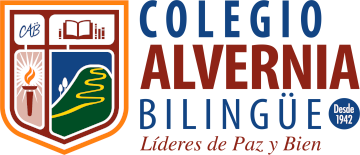From very early ages they try to bring us closer to the universe that we have outside our planet Earth. Which is an immensity of topics related to physics, chemistry and, for a little over 100 years, with quantum physics. Of course, not only with these disciplines, but with many more, ranging from biology, geology, thermodynamics and others of an anthropological nature such as history, philosophy and obviously theology, and so on, others, in which we can find a direct and indirect relationship. with astronomy and space sciences.
Turn off the light, look up and look at the universe on a starry night.
― Alberto Corral
For this reason, it is curious that in the conventional academic training that we receive in primary school, it is hardly possible to talk about the solar system, recognizing the planets in their order, but without estimating distances and sizes between them, nor the characteristics of each one or their origins with deities and even with the same days of the week.

The proper movements of the planet Earth
But without a relationship to the seasons of the year, the movement of the stars in the firmament or the creation of calendars and the changes they underwent to adjust to the movements of the celestial bodies. Another topic typical of the classes taught in social sciences or natural sciences are the phases of the Moon, where the main topic is to distinguish the phases, but without recognizing them in the sky, or understanding the celestial mechanics behind it, to regulate things like: the tides, the synchrony with the rotation of the planet or the enigmatic eclipses, where most people believe, that they appear after many years, when in reality we have four or sometimes five per year, in some cases they will speak of the arrival of humanity on the lunar surface, but only with the Apollo 11 mission, omitting the other 5 successful missions or the economic, intellectual and human resource investment to have achieved such a feat. One or another thinker who has made contributions to the understanding of heaven will be named as: Nicolas Copernicus, Galileo Galilei or Isaac Newton, but far from knowing about Aristarchus of Samos or Eratosthenes of Cyrene Johannes Kepler, Tycho Brahe, Edmund Halley, William Herschel and neither talk about women whose titles and jobs are not as well known, as there will be hundreds of thinkers among them: mathematicians, naturalists, philosophers, clergymen and astronomers who revealed the firmament and whose works or names are not talked about for more the least your contribution has been. In high school it can be seen how the approach is limited to some optics and the relationship with telescopes, but only refractors, doing exercises with the set of magnifying glasses at each end of a cardboard tube. Gravity, but as a variable in equations such as acceleration of bodies in free fall or parabolic throw in physics and kinematics classes, but beyond how it works or why it is part of one of the fundamental forces that governs the universe, No. Perhaps there will be one or another topic that is taught in schools and it escapes us to comment on it here. But surely, if it has been dictated, it will have been done in the most superficial way. What we are going with all this is that: if academic training topics continue to be given in isolation to astronomy, the opportunity to clarify some phenomena will be lost. natural, which he observes or experiences throughout the daily life of any individual, going unnoticed and without understanding, as will have happened to someone who wonders something as trivial as: Why the names of the days of the week tend to resemble the names of some stars in the sky? Or why the Moon is not only seen at night but also during the day? With a solid formation of scientific culture, and with astronomy as a transversal source, it would be possible not only to respond to the world that surrounds us, but also to be a bridge between learning and discovering that universe from which human beings, together with their intellect are part. It is imperative to relate astronomy to the academic training of any person, because in this you will find answers to the beliefs of civilizations, to the organization they had from the calendars made with the movement of celestial bodies, to the change that matter undergoes and the energy, to such a point in which it has been possible to find, that the elements present in any human being or object around, was forged inside the stars and in their explosions at the end of their life stages, at the innovation of instruments that would allow us to see beyond as far as the eyes can see, or incredible as it may seem to reach the Moon and other planets, as well as to the ends of the solar system. Trying to introduce in this text all the situations where astronomy could shed light on everyday questions or clarify the origin of our society and the impetus to scrutinize the universe would be too strenuous. But not enough to exhaust the impetus that humanity has to learn and continue discovering the universe. For the Alvernia Bilingüe school and its educational proposal to have an astronomical center as part of the training of its students, is to bet on an education model with greater scope and impact for the understanding of the natural world and the universe.



